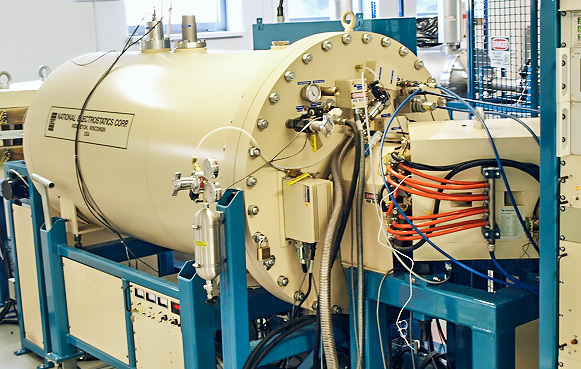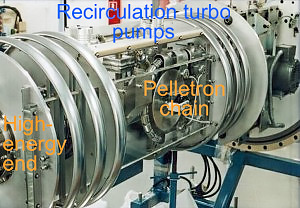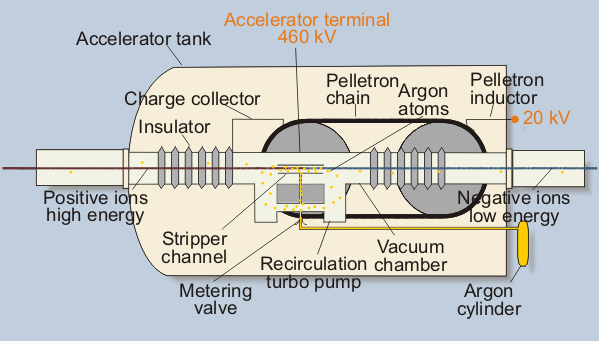1.5 SDH Pelletron is an electrostatic accelerator of tandem type. It pulls injected negative ions inside the accelerator terminal, where the ions are stripped out of electrons and change charge into positive. The positive ions, are pushed further out of the terminal, towards the analysing magnet. The ultimate energy of accelerated ions is 1 MeV.


High voltage at the accelerator terminal(ca. 460 kV) is maintained by electric charge supplied by the pelletron chain. Its pellets get charge at the inductor and transport it to the collector.
Strong electric field pulls negative ions coming from the low-energy end, into the terminal. At the terminal, the ions pass the stripper channel, and collide with atoms of argon flowing through it. In these collisions the ions lose electrons, and change charge into positive.In effect they are pushed out of the terminal, towards the high-energy end.
Stripping is an important mechanism in the 14C AMS technique. In practice, the extremely low number of 14C atoms in the spectrometer is comparable with number of molecules of 12CH2 and 13CH, which cannot be separated from 14C in magnets (the same mass) and must be eliminated in some other way.

In older AMS systems, very high terminal voltage was applied (up to 5000 kV). In those accelerators carbon ions were usually stripped out of 4 electrons, and were tranformed into C3+ ions. As the molecules did not form ions with such a charge, they could easily be filtered out in the analysing magnet.
In the “Compact Carbon AMS” one can use much lower voltage. This allows for stripping of 2 electrons and production C1+ ions. Such a ionic status is possible for the molecules. Luckily, these molecules are effectively broken when passing through sufficiently long stripper channel. Atoms of broken molecules have masses lower than 14, and obviously do not interfere with the 14C signal.
Other pages on the AMS spectrometer:
General | Ion source | Injection magnet | Accelerator | Analysing magnet | Drift tube | Electrostatic analyser | 14C detector
